Communications
5 Brand Storytelling Lessons from Forward 2018
By Erin Ollila on June 18, 2018
Last year, I told you to buy your tickets to Forward 2018 as soon as they went on sale, and considering the huge turnout at the event, I'm guessing that many of you took my advice to heart. Still, many more missed the opportunity to learn from incredible keynotes from Paul Alexander, Lynda Barry, and Wes Moore and from breakout sessions on brand storytelling and marketing insights.
It's great to have a sneak peek into the keynotes, panels, and sessions from what others are sharing by means of quick quotes on social media, but Twitter posts alone won't move you further in your careers and content strategies. If you missed the opportunity to come to beautiful, sunny Boston for this year's conference, here are five of the key lessons I gleaned from this year's event.
Consider the Audience Experience
In his introductory speech to last Thursday's Forward 2018 conference, Skyword CEO Tom Gerace said, "We are entering the second phase of marketing transformation," and for the rest of the day I ruminated on exactly what he meant by that statement.
It's obvious that the first phase, the one we're beginning to move past, but absolutely not leave behind, revolved around storytelling. The first phase existed in the shift from traditional marketing to content marketing. Brands needed to learn why storytelling was vital to their success and also how to share stories with their audience. Since that is catching on, it's important to ask the question-what's next? What would the second phase bring? How would we as content marketers rise up to meet this challenge of entering a new phase, of entering the unknown?
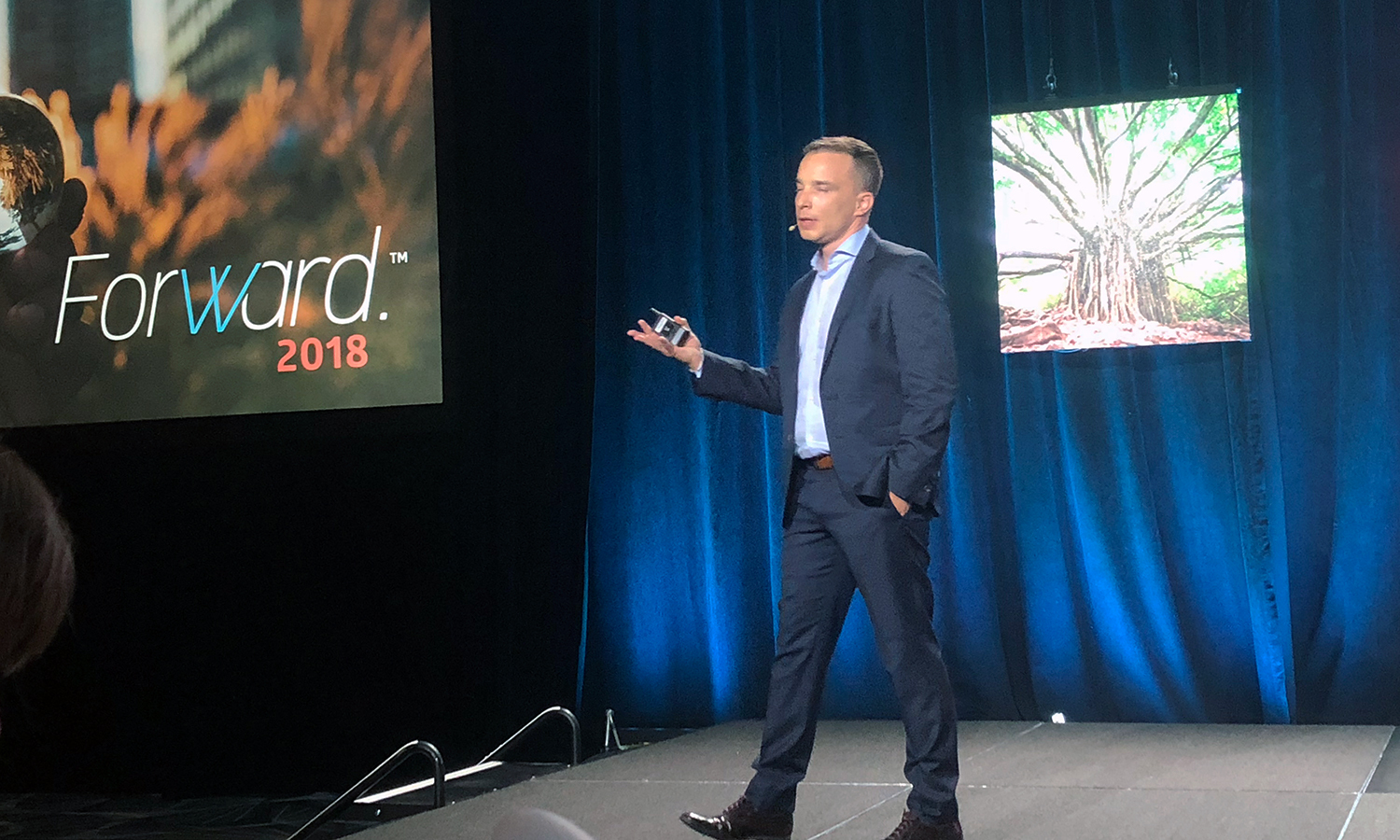
Skyword CEO Tom Gerace delivers the opening keynote
And then, at one point, Gerace continued his introduction by asking the audience, "How do we create extraordinary customer experiences?" making me realize that this second wave is where storytelling meets audience experience. Just as brands study customer experience, we-as content marketers-need to study, analyze, and carefully craft the experience we want our audience to have when consuming our content.
It's no longer just about our marketing teams making decisions on what we want to share with our audience. Instead, we should be asking ourselves questions such as, "How do we want our readers to feel?" The experience of digesting our content, in addition to the stories we share, are what makes a loyal, engaged audience. It's time to start considering our audience's experiences as part of our content strategy.
Adjust Your Approach to Content Creation
After the opening keynote, I started my day by attending "How IBM Security Built a World-Class Site Through Internal SME Contributors." As a writer, and not a marketing director or managing editor, I was not necessarily the primary audience for the panel, but I went because I often work with subject-matter experts, and I've always been curious about the best ways to guide non-writers in both creating content and sharing their expertise as a way to support the content I'm writing myself.
While the entire breakout session was full of great information as to how IBM Security manages an entire team of internal contributors, one particular point mentioned during the conversation stood out to me the most.
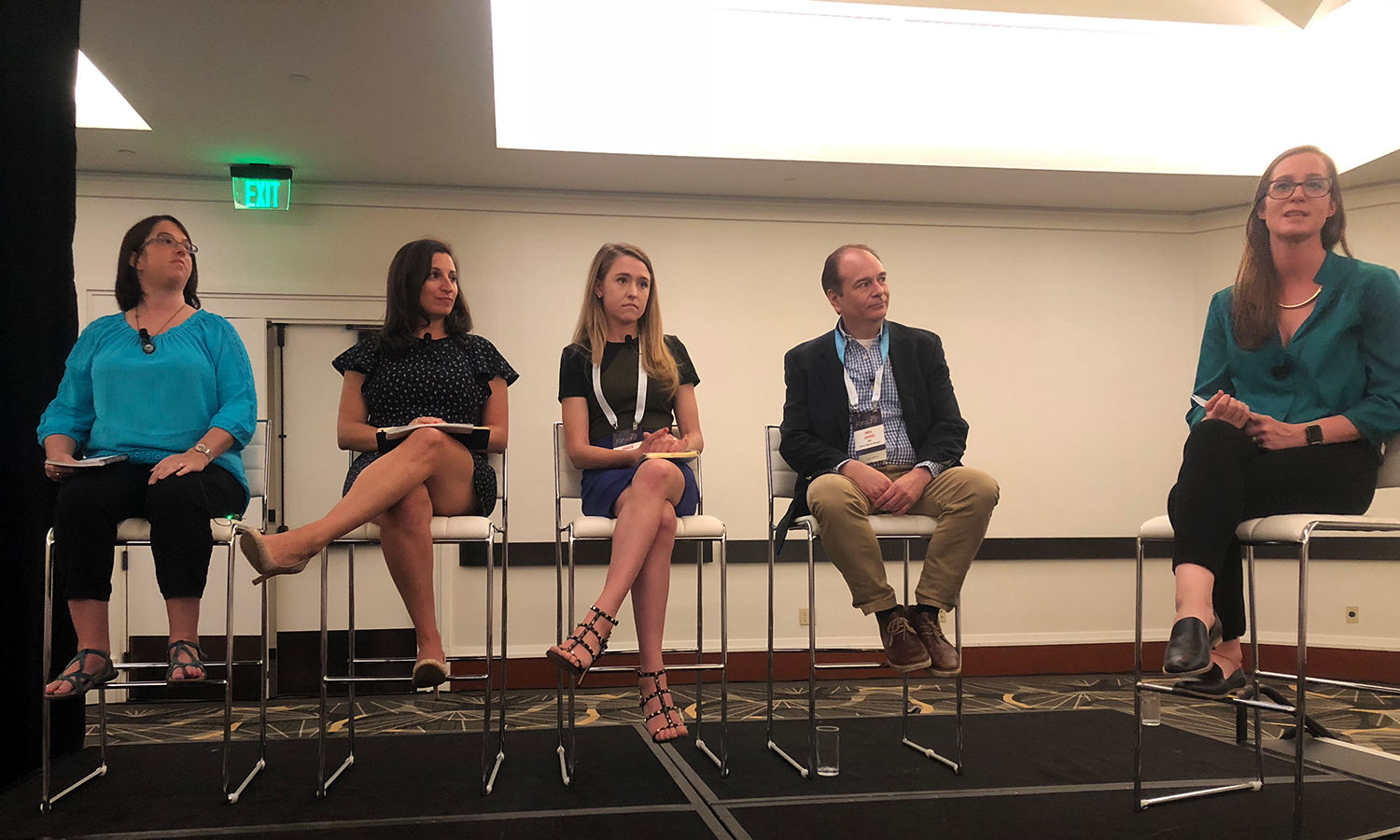
From left to right: Jennifer Tullman-Botzer, IBM Security; Rachel Logan, Skyword; Grace Murphy, IBM Security; Neil Jones, IBM Security; Molly Conicella, Skyword
When discussing how to get non-writers to take the reigns and create blog content, Grace Murphy, data security product marketing manager from IBM Security, said, "The best way to learn is by doing something." She suggests they first start by jotting down notes, writing an outline, and leaning on her for help as they ideate and write. She continued by explaining that she has to remind the contributors that their job is to inform the audience and suggests they "start with the problem rather than the product."
Invest in Learning About Your Audience
As smart marketers, we invest in tools that give us information about the people who view our content. However, analytics can only share data. It doesn't tell a story. To learn the whole story, you'll need to match analytics with other tools of learning, and at Forward 2018, Fidelity Labs explained how they did just that. After deciding to create a product for the solopreneur and small business audience, they set to work to learn as much as they could-before and during the creation of the product-about their ideal customer.
In the session "How Content Shapes Research And Development," Christine Del Castillo, senior content designer at Fidelity Labs, informed us that knowing your audience intimately is the key for any business and brand to both share a story and provide a better customer experience.
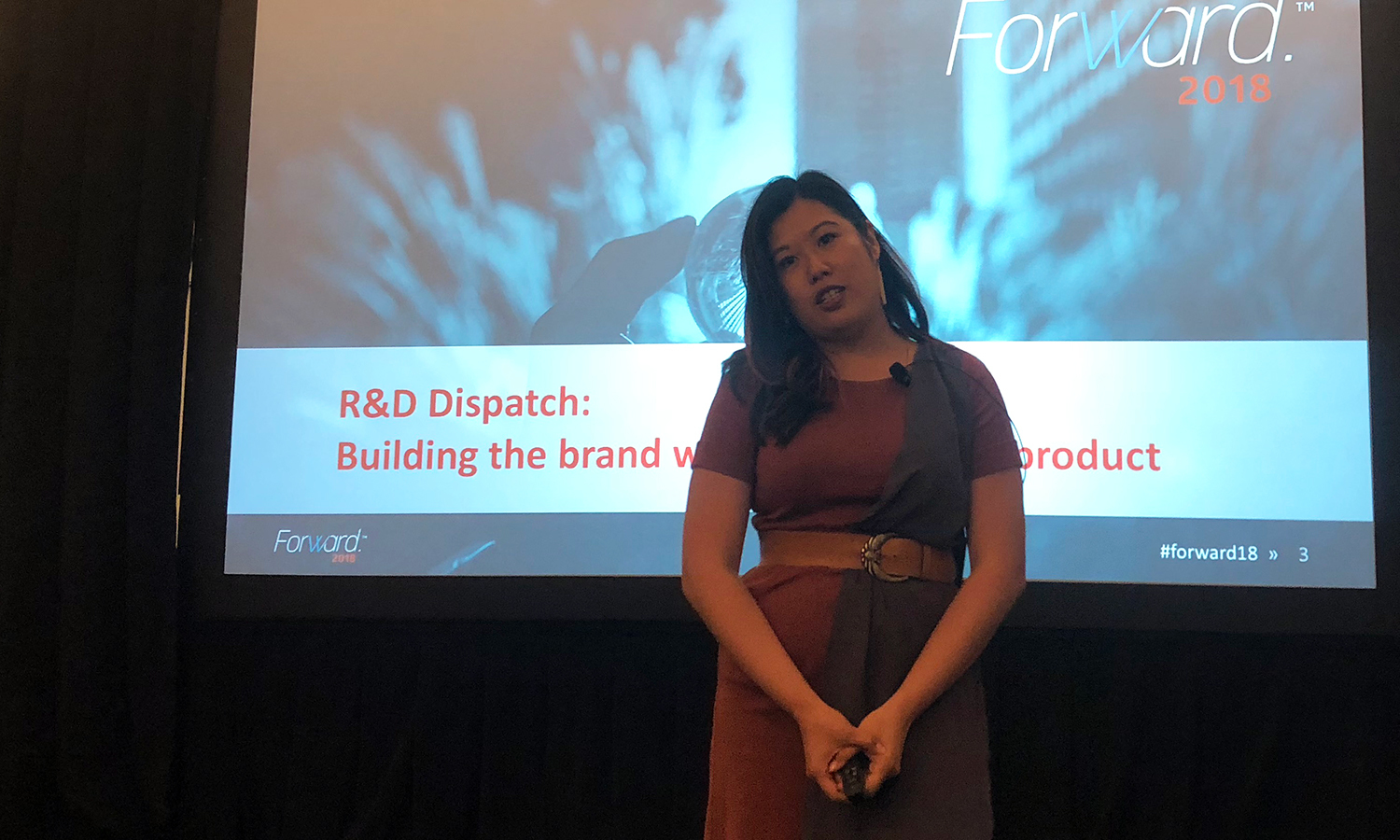
Christine Del Castillo of Fidelity Labs presents during a breakout session
For Del Castillo and her team to do so, they created the blog IndyLife, geared toward the independent worker. Fidelity Labs teamed up with writers who were actively living the lifestyle and could share first-person experiences with their peers on everything from applying for a small business loan to paying quarterly taxes to pricing products.
The website was a testing site, and for many reasons. First, the analytics would show the content team which type of articles were performing best. This would help tailor the content strategy for the future. But more importantly, the folks at Fidelity Labs were able to learn about how their ideal customer experiences life as an independent contractor. While it may have been a significant investment to spend on a large-scale content campaign, the research team at Fidelity Labs was able to tailor their product based on what they learned from their future consumers.
Introduce Characters
Who are the characters in your brand story? If that question was easy to answer, think about this: Who are the characters in your smaller pieces of brand content, like a blog article or an infographic?
In the session "How We Built an Audience for the Endless Thread Podcast Through Great Audio Storytelling," producers Ben Brock Johnson and Amory Sivertson discuss the importance of the people they include on their show. In case you haven't listened to it yet (and you should-here's the link), the show shares some of the most compelling and interesting stories that producers discovered via Reddit communities. But because all the stories or questions shared on Reddit are anonymous, getting characters for their episodes can prove to be impossible at times.
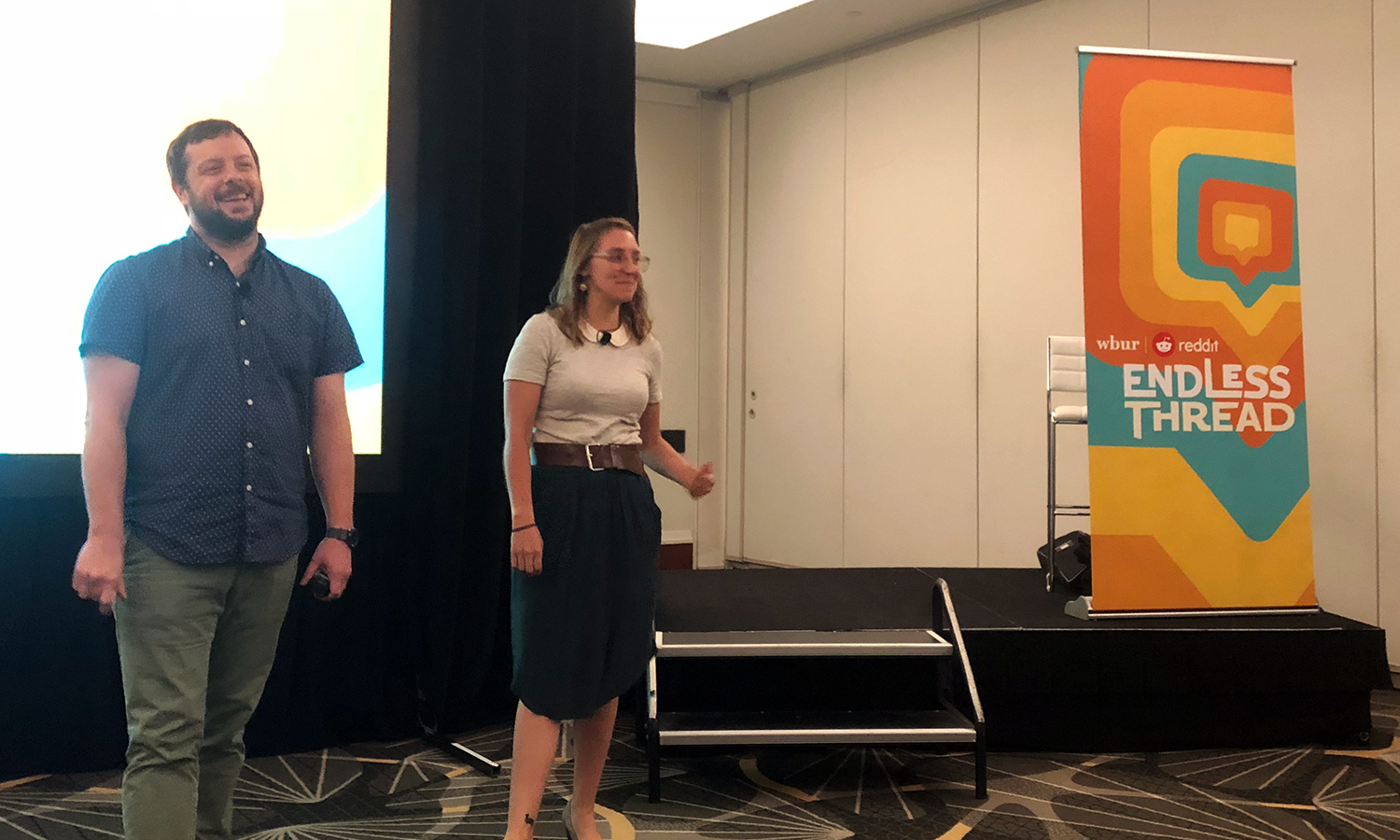
Ben Brock Johnson and Amory Sivertson of the podcast Endless Thread present during a breakout session
However, both producers stressed the importance of a character in your content. Take for example, the episode "Something Wicked," the story of a Reddit commentor who was finding mysterious notes around their home and thought someone-possibly the landlord-was breaking in. Brock Johnson and Sivertson weren't able to introduce the original poster in that episode, but instead spoke with the top commentor and a subject-matter expert (who I won't describe so I don't give anything away) and presented them to their audience as characters in their own right while still spinning the entire tale. Slight spoiler: It wasn't the landlord. It was something even stranger.
So how can you implement this strategy in your own brand storytelling? That's easy. Make your content more powerful by consulting an expert, and test out the many different types to include until you find what works best for you. Follow Fidelity Labs by bringing on a creative team living your brand's lifestyle. Take a note from Endless Thread and use secondary characters and subject-matter experts to enhance your content. Bring on internal employees, like IBM Security does, to use their expertise to guide your content campaigns.
Don't Spread Your Message Everywhere
Attention spans are short, and our audience spends their time in many different places online. So where does your brand show up to meet its customer base?
In the session "How Vistaprint Is Transforming Its Brand Through Storytelling," Leona Frank, senior manager of brand, content, and social for Vistaprint said, "We used data to find out [the answer to the question], 'Where's our audience?'" Instead of spreading themselves thin when deciding to embrace storytelling as a way to rebuild their brand, the team first concentrated in one social channel the majority of their customers frequented. Then, as they were able to establish credibility and cadence, they were able to adjust and exceed audience expectations.
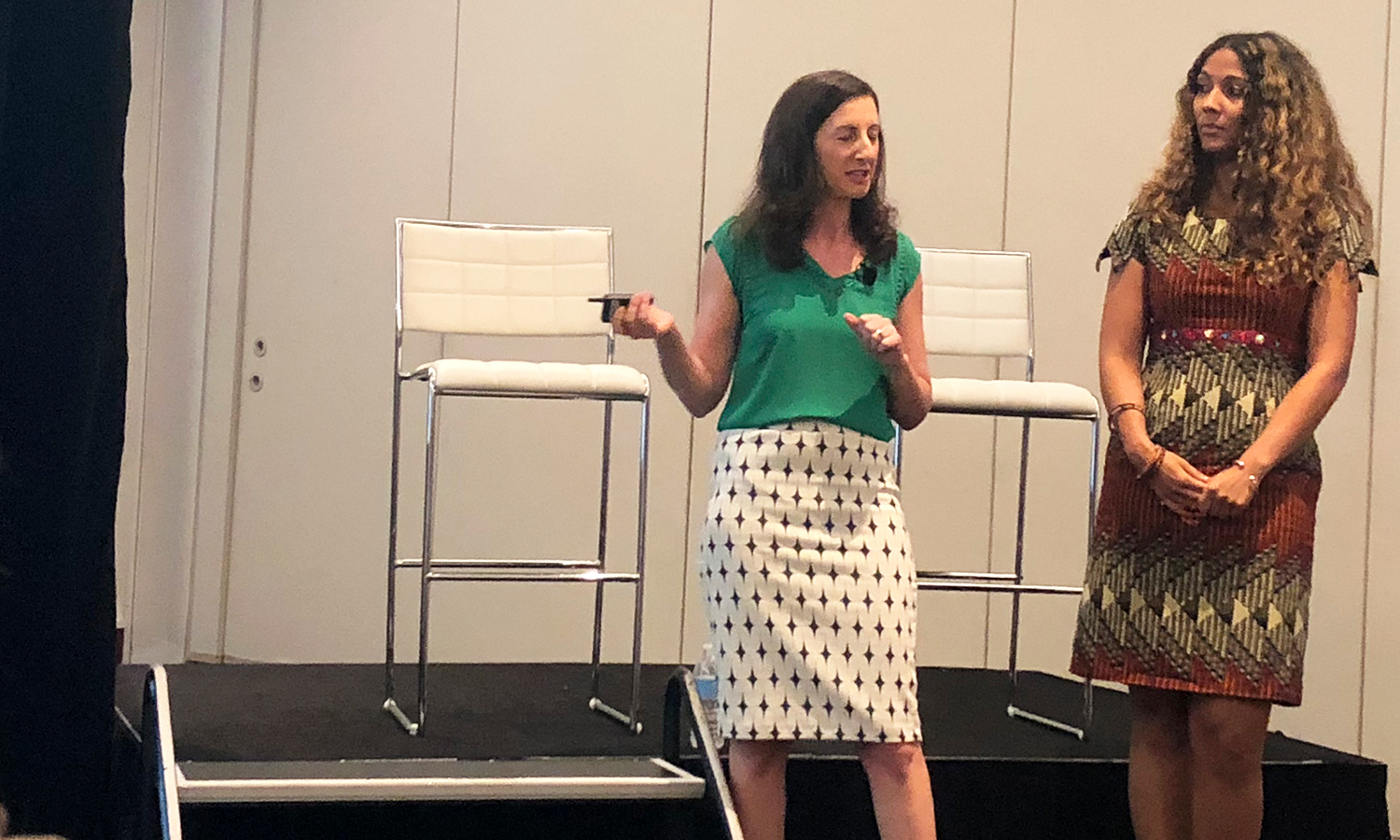
Sarah Nunes and Leona Frank of Vistaprint present during a breakout session
Don't waste your efforts producing every type of media content across every social channel until your audience begins to engage. Frank says, "Measure whether it resonates and you can build on that." Allow your audience's interactions and behavior to establish how you approach content. She suggests, "Grow with your customers and see where the industry is going." Take the stress off to be everything to everyone and simply serve the people already paying attention to you.
After the conference was over and attendees were enjoying an evening of cocktails and appetizers, I asked Arun Kristian Das, New York City-based journalist and content creator, what his biggest takeaway was from the overall event. He said, "The message that stood out to me is that good storytelling knows its audience-whether you're a marketer, journalist, or other kind of communicator, you need to understand who you are serving and informing."
So as you start a new work week, take a moment to think about how your approach to storytelling and customer experience will play out in every task you accomplish this week. Are you learning about your audience? Are you showing up in the places they spend their time? What new characters can you introduce in your storytelling campaigns?
For more stories like this, subscribe to the Content Standard newsletter.
Featured image attribution: Brandon Green; all in-body images courtesy of Erin Ollila

